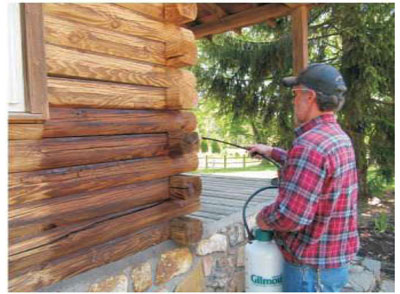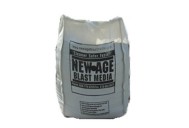 Perma-Chink Systems, Inc
Log & Timber Home Care Experts
Perma-Chink Systems, Inc
Log & Timber Home Care Experts
Michael
For the best performance and lasting beauty LIFELINE™ finishes should only be applied to bare wood surfaces or an existing LIFELINE finish that is still in good condition. To remove an existing finish there are three options: pressure washing along with a chemical finish remover, media blasting or sanding.
Since interior finishes are not exposed to rain, snow, wind, and direct sunlight, long term resistance to weather is not an issue, and homeowners have more flexibility when choosing the color and appearance of interior wood surfaces. However, there are some parameters that need to be followed to take advantage of the benefits of an interior finish, such as preventing odor absorption and making the walls easy to keep clean, while getting the look you desire as well.
All Lifeline™ finishes are water-based, film-forming coatings. Although we refer to our pigmented coatings as “stains,” they do not “colorize” the wood like penetrating oil-based products; they form a film on the surface of the wood, thus protecting the underlying wood from the effects of wind, water, and sunlight. Since they form a film on top of the wood, they rely on proper surface preparation to ensure good adhesion.
Although Energy Seal™ and Woodsman™ come in different colors and both may be used for a multitude of purposes, the proper application of these products are quite similar. The main difference between Energy Seal and Woodsman is a matter of surface texture. Energy Seal contains a fine aggregate that gives it texture, whereas Woodsman is a smooth surfaced sealant. The texture of Energy Seal enables it to more closely match the texture of wood and accept a stain, so that it will blend in with the stained wall color if so desired. Although Woodsman is stainable, it will not become as indiscernible as Energy Seal.
 Ever since Perma-Chink Systems introduced borate treatments to the log home industry over 20 years ago, its products have been the preferred method of protecting log homes from wood-destroying insects and decay fungi. We are still the world’s largest supplier of borate-containing preservatives for log homes, and although there are other borate-based products now available, most are based on technology developed by Perma-Chink Systems back in the late 1980s.
Ever since Perma-Chink Systems introduced borate treatments to the log home industry over 20 years ago, its products have been the preferred method of protecting log homes from wood-destroying insects and decay fungi. We are still the world’s largest supplier of borate-containing preservatives for log homes, and although there are other borate-based products now available, most are based on technology developed by Perma-Chink Systems back in the late 1980s.
Applications of all Perma-Chink exterior finish removers, cleaners, stains, topcoats and sealants can be a bit of a challenge in extremely hot weather, which we consider over 90°F. However, if you know what to expect and avoid you can easily cope with applications during the hot summer months. We’ll address each of our product lines individually. And for all our products, we recommend keeping the product pails out of the direct sun on hot days to minimize the heat build-up.
Flavonoids are colorful compounds that are present in most plants. They are what make red beets red, and blueberries blue. They are also responsible for giving flowers their broad range of colors.
Trees, too, contain flavonoids, with some species containing more than others. In some types of wood, these flavonoids are apparent right from the start. The wood may be yellow, red, or other color, depending on the species. But in several species of wood, these colored flavonoids may not become visible unless the wood is exposed to some type of acid.
Can Lifeline™ Interior stains be used to finish interior floors? Technically the answer to this question is yes, but we rarely recommend them unless whoever is going to be finishing the floor fully understands the characteristics of water-based, transparent stains and knows how to apply them.
Whenever the outside temperature is at least 20 degrees lower than the temperature within a home, it’s a good time to find any gaps that may be leaking air. All you’ll need is a small pail of warm water, a piece of chalk, and a perhaps a ladder depending on how high the ceilings are. If you dip your hand in the water then run your wet hand over the interior walls, keeping it about 6”-12” away from the surface, you will easily feel any cold air leaks that are coming through the walls or around the windows. As you move your wet hand closer to the wall you can pinpoint where the leak is located. Be sure to mark those leaking areas with the chalk.
Do you think your utility bills are too high for the size of your home? Is your home drafty or uncomfortable? Does water condense on the inside of your windows? Have spiders, ladybugs and other insects invaded your living areas? The first step in resolving all of these issues - and more - is an energy audit conducted by a trained professional with the proper tools and equipment. But is it worth it?
New Age Blast Media Available Sizes
Call 1-800-548-3554 to Order
Features
- Made from recycled glass
- Superior to corn, walnut, sand or soda media
